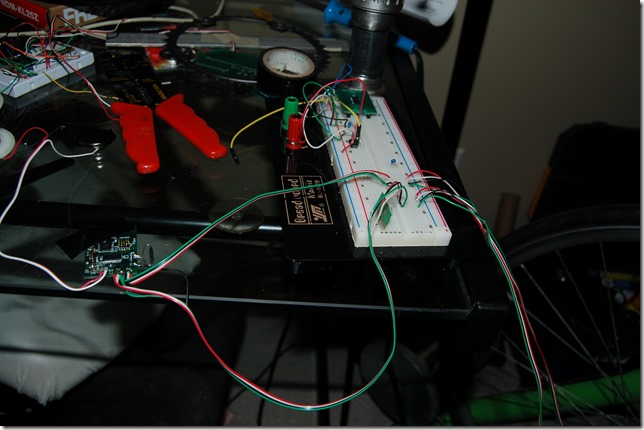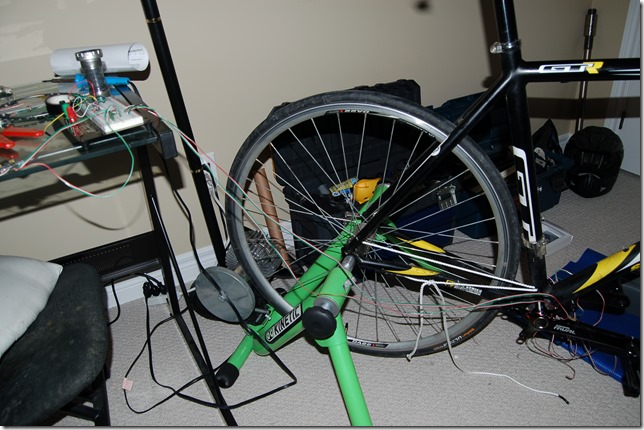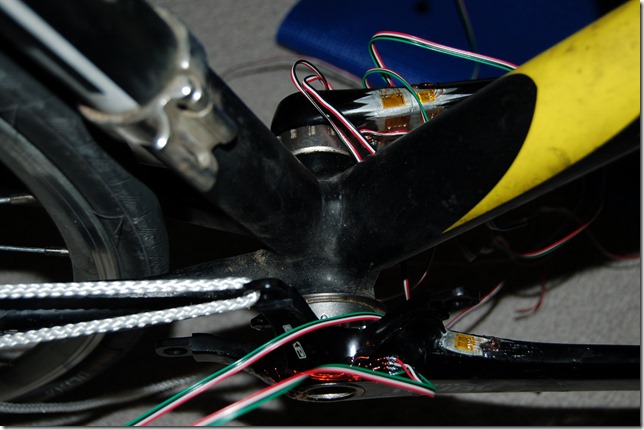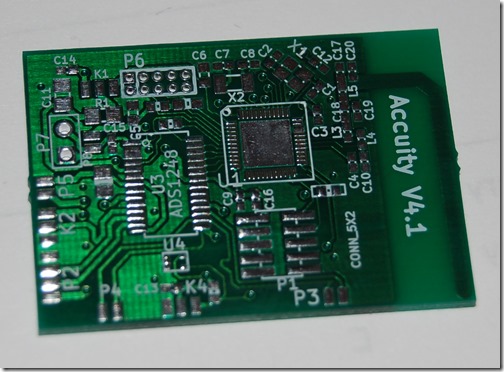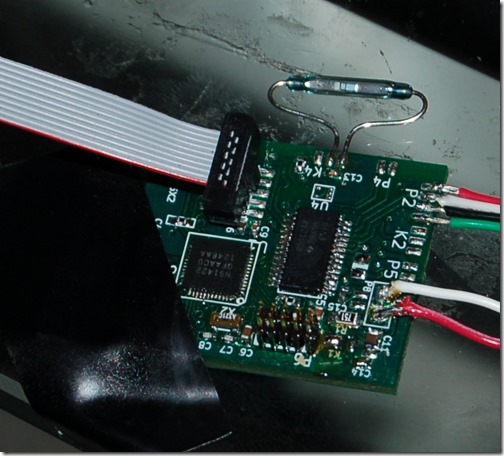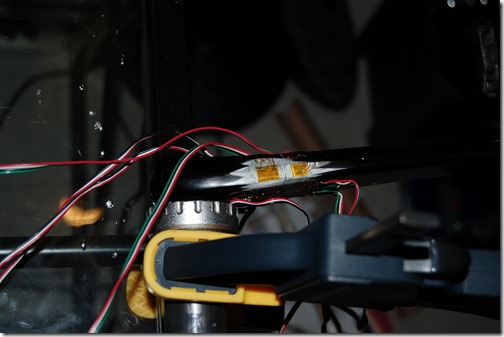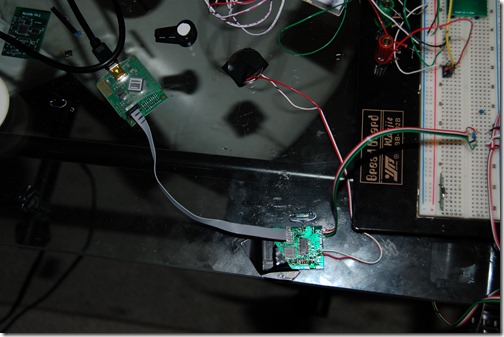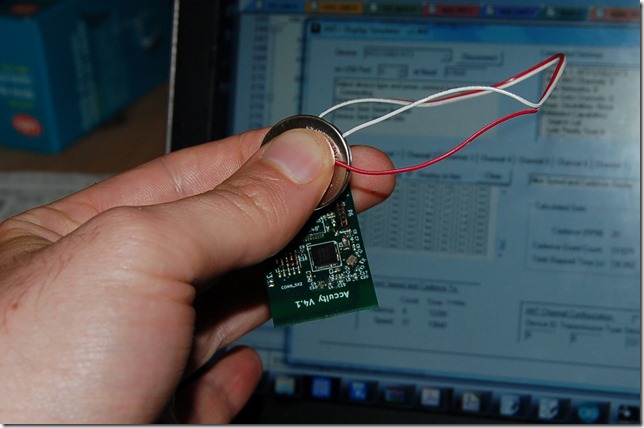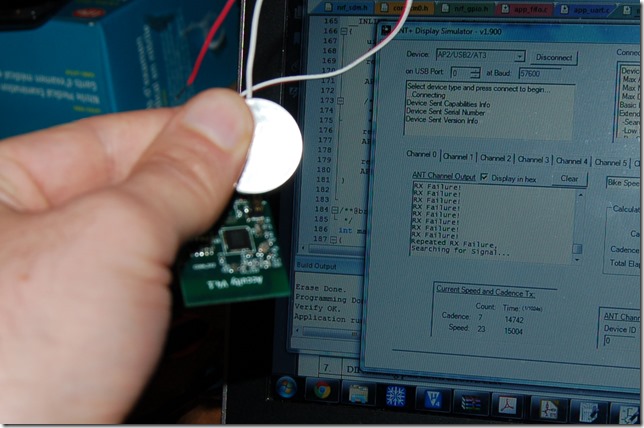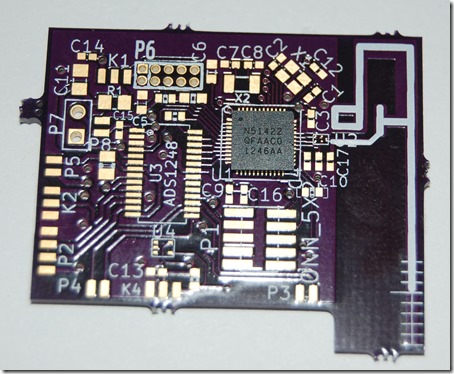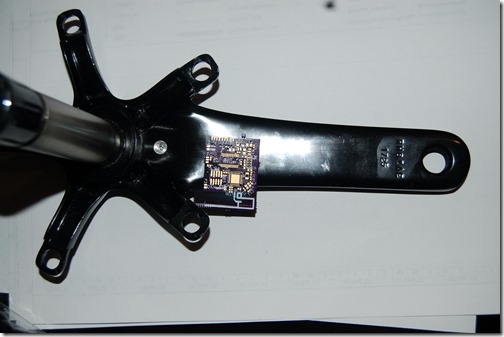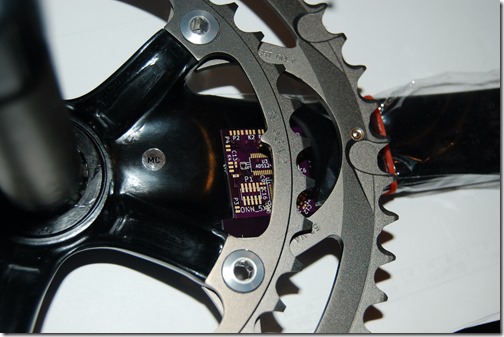I wanted to give a quick update as I’m going to be away from this project for about 1 – 2 weeks. In the meantime I started a discussion on crowd funding over at slowtwitch here. Feel free to swing over and leave a comment, or drop me a line (here) as an alternative or in the comments below. I want to know peoples issues, concerns, hopes, etc. Do they see a market? is price the major issue? Is the app scene pushing adoption? Would you use a power meter if it was cheaper? Anything else?
I was hoping to get the board on the crank set and bring it with me so I could continue coding and sorting out bugs but that proved improbable. From the above photograph You can see my custom board connected to a breadboard. This is just a quick way of changing setups during testing. The board is wired to a coin cell battery that I’ve actually been using for a couple of weeks. Even after shorting it out a few times I still haven’t had to replace it. Still reads about 2.9V. Bodes well for long operation. I’m aiming for a minimum of 100 hours, hoping for 150 – 200 hours with some optimization.
From the breadboard the inputs are wired to my former V3 power meter. V3 was “sacrificed” so I wouldn’t waste a crank (makes for an additional prototype as well) and it serves as a quicker test setup than building a new one from scratch. The interesting thing Is I have a a total of 5 different ways to measure the left legs torque, and 1 way of measuring the right leg. This is great for torque testing and confirming the shear gauge measurements against other designs. I’m well past this stage, but more confirmation results certainly help the process.
Just a close up shot showing off how I’ve modified V3. The setups now connect to bondable terminals for stranded wire connections. The board will migrate onto the crank arm by the chaining and these wires will be shortened.
Look for further updates in about 2 weeks. Feel free to email me in the meantime.
